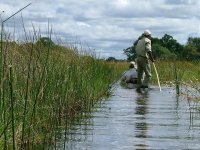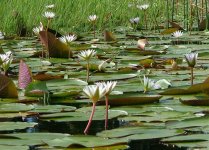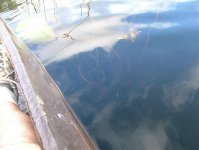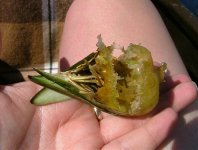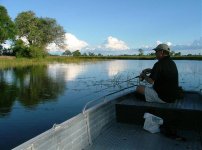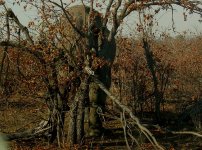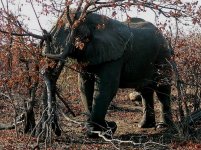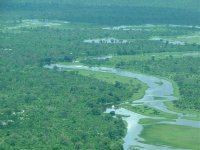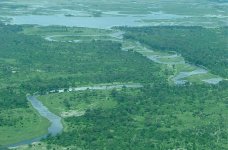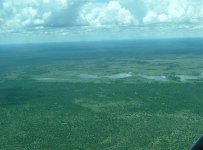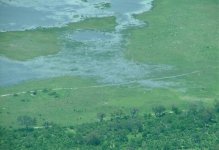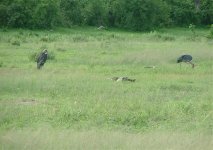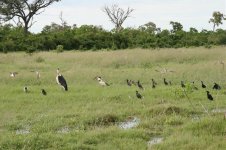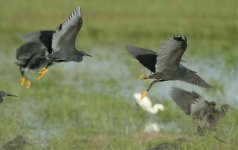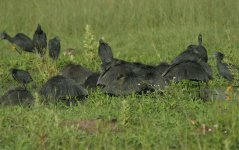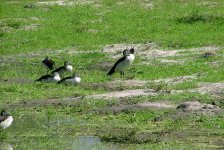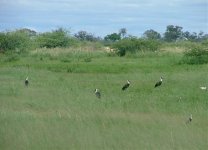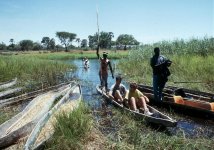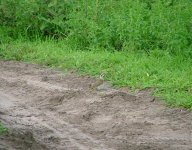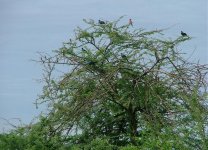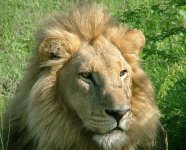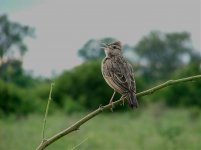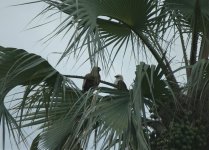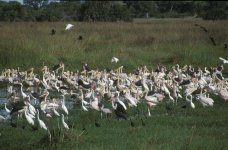We had been out on an early morning drive when we arrived at the place described in photo 4 of the previous posting. On our right, and ahead of us coming over the road, were the creeping waters of Lake Zibadianja, inching over the grasslands. We were surrounded by birds, an incredible bird party including 5 African Fish-eagles, 27 Black Herons, Woolly-necked Storks, Ruff, Marabou, African Jacanas, Pied Kingfishers, Whitefaced Ducks, Comb Ducks, Sacred Ibis, Ruffs, Squacco Herons, Whiskered Terns, Yellow-billed Storks, Spurwing Geese, Blacksmith Lapwings, Wood Sandpipers, Little Egrets, Cattle Egrets, Long-toed Lapwings and a juvenile Saddle-billed Stork. The fish eagles were quite literally prostrate on the ground, and this was the clue to what had been going on. They were quite simply stuffed full to bursting.
It seems probable that, as the water crept over the low-lying grassland, worms, grubs, larvae and insects were being flushed out. Fish, in a sort of scaly feeding frenzy, were taking terrible risks skittering through inches-deep water to gorge on this bounty, because they in turn were being eaten by an ever increasing crowd of avian predators which, even as we watched, was growing by the minute as more and more birds flew in.
The first picture shows marabou, white-faced ducks, ruff, black herons, sacred ibis, and three woolly-necked storks in the tree in the background. The second show the brilliant yellow feet of the black herons to advantage, while in the third picture a group of them have settled down to fish in their inimitable manner. Number four is a fine group of comb ducks, with the male displaying his black comb to advantage. In the final picture some woolly-necked storks and long-toed lapwings have arrived for their share.
It was a fascinating example of an unusual set of circumstances generating a memorable sighting, and we were thrilled to bits.
Best wishes,
Dave Kennedy




